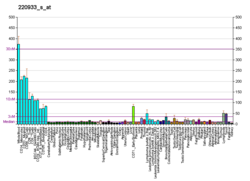Function
It catalyzes the following reaction, requiring Mg2+ and Mn2+ as co-factors.
UTP + RNA(n) = diphosphate + RNA(n+1) [7]
Uridylation catalyzed by ZCCHC6 takes place readily on deadenylated mRNAs inside the cells. [8] Purified ZCCHC6 selectively recognizes and uridylates RNA molecules possessing short poly(A) tails (less than 25 nucleotides) in vitro. In cells depleted of ZCCHC6, the majority of mRNAs lose the signature oligo(U) tails that are characteristic of ZCCHC6 reactivity, and the half-life of mRNA molecules are accordingly prolonged. [8]
In addition to mRNA degradation, uridylation is also thought to function in pre-microRNA maturation, with some group II pre-microRNA requiring 3' mono-uridylation for Dicer processing. [9] ZCCHC6 is thought to work in redundancy with ZCCHC11 to mediate the biogenesis of the let-7 microRNA through uridylation. [10]
Genetic Inactivation of ZCCHC6 Suppresses Interleukin-6 Expression and Reduces the Severity of Experimental Osteoarthritis in Mice. [11]
This page is based on this
Wikipedia article Text is available under the
CC BY-SA 4.0 license; additional terms may apply.
Images, videos and audio are available under their respective licenses.




